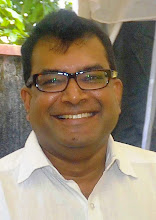I
was giving some thought to what should be included in a youth policy, one which
no doubt will be thrust upon us in March 2013. I believe it is being done with
great haste, as the suggestions will not match aspirations, which I believe
should be from a critical mass of about 25,000 youth themselves between ages
15-29 from all parts of the Country, and comprising as many female as male.
In
this way one will get a feeling for what it is they expects from one. I know
one who said that due to the state of Education, young people without critical
skills of analysis will not be able to come out with a logical wish list of
what is practical for a Govt. to provide, rather will just provide a Santa
Claus list of what they want the Govt. to provide or must provide as a minimum.
It
is the fault of successive governments, capped by this one which appears to
promise even more than any before it, to fulfill the needs of youth. For
example just think of education today with NO private sector colleges, just the
public sector. Where would the majority of the kids go to get training in an
employable skill?
The
marketplace has taken over. All a Govt. does is to provide guidelines and
improvements in teaching quality, so that output improves. Will this type of request
come from youth, who do not know they are receiving rotten teaching? They don’t
know what good teaching is to compare! Am I asking the wrong audience for input
in developing a Youth Policy for Sri Lanka?
This
is a teaser blog entry, and I will no doubt explore this topic further in the
weeks and months to come so that we can critically think what it is that the
State can practically do for youth so that their aspirations can be met, while
at the same time these aspirations are congruent with the overall policy of the
state as far as their development and quality of life goals are met.
For
ease of clarity, we may have to breakdown the 15-29 age into a number of subsets
and come out with specific policy guidelines that cater to those who wish to leave
the formal education sector at various critical ages, due to different reasons.
We can only generalize. There are always exceptions to the rule. The opportunities
available to urban and rural youth are different. Due to the proximity of small
cities to all rural areas, the urban rural divide in Sri Lanka is probably confined
only to the migration to Colombo for employment as opposed to other cities in Sri
Lanka where opportunities are clearly less.

1 comment:
interesting question this-- whether to give the young people what they want, or for the elderly to give the young people what they know is good for them.
in this case, i favor the elderly, being one myself, as i feel like i've learned so much in my life that I cannot use any longer in my life but that could enhance the life experience of youth.
youth is truly wasted on the young! if only I could be young again!!
Post a Comment